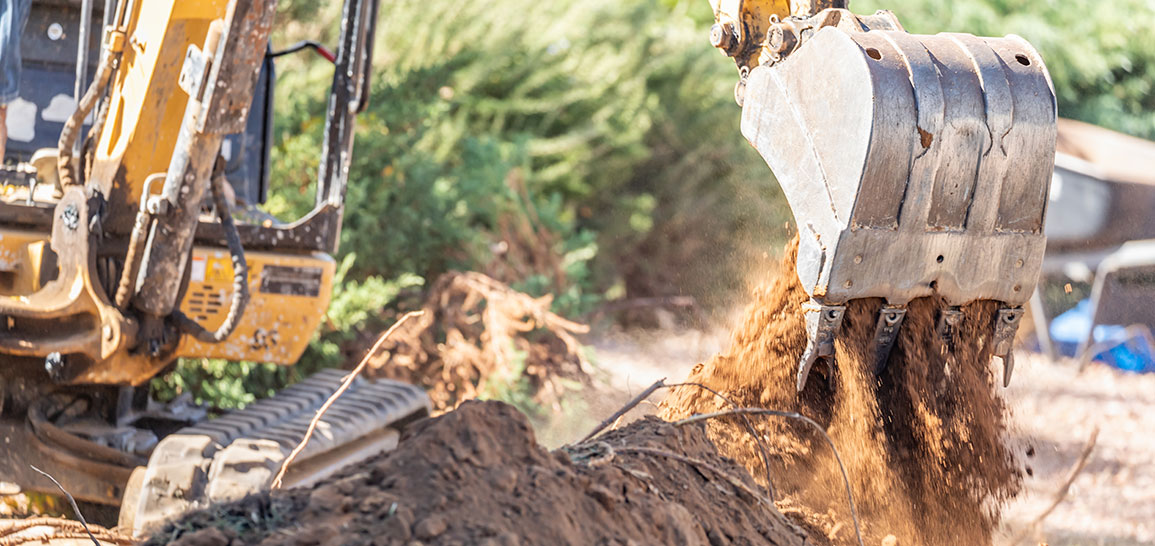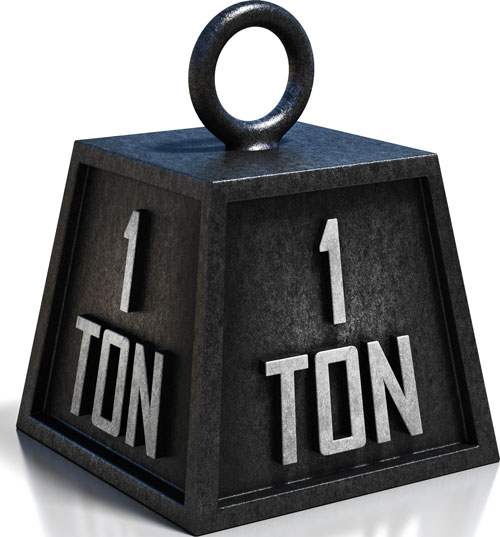
Trenching and Excavation Safety
Quick Facts
 Did you know the average cubic yard of dry fill dirt weighs 2,000 pounds? If it’s made up of a mixture of sand, stone and gravel, the weight can easily exceed 3,000 pounds per cubic yard. So the material of a 3’x3’x3’ excavation weighs as much as a mid-sized car!
Did you know the average cubic yard of dry fill dirt weighs 2,000 pounds? If it’s made up of a mixture of sand, stone and gravel, the weight can easily exceed 3,000 pounds per cubic yard. So the material of a 3’x3’x3’ excavation weighs as much as a mid-sized car!
There is no reliable warning when a trench fails. The walls can collapse suddenly, and workers will not have time to move out of the way. Even a seemingly small amount of dirt can fatally crush or suffocate workers. If they survive a trench collapse, they may suffer traumatic brain injuries, injuries such as compartment syndrome or crush syndrome, spinal cord injuries, broken bones, and a host of other serious injuries.
What can you do to prevent workplace fatalities in trenching and excavation operations?
Follow the requirements outlined in 29 CFR 1926.651 and 1926.652. Following those requirements will help you protect workers and it is also the law! All employers, including municipalities, must comply with the trenching and excavation requirements found in those federal codes of regulation.
View the full 1926 Subpart P standards
Additional Resources
For additional resources on trenching and excavation safety including the Trenching and Excavation Safety Publication, Trench Safety QuickCard, Trench Safety Posters, and more, please visit:
Contact MMIA’s Risk Management Team
Contact Montana Department of Labor and Industry’s Safety and Health Bureau
Overview
Nationally workplace fatalities related to trenching and excavation have tripled since 2014 according to the Occupational Safety and Health Administration. Trench collapses, or cave-ins, pose a great risk to workers’ lives. When done safely, trenching operations can limit worker exposure to cave-ins and other potential hazards including falls, falling loads, hazardous atmospheres, and incidents involving mobile equipment.
Trench Safety Measures
Trenches 5 feet (1.5 meters) deep or greater require a protective system unless the excavation is made entirely in stable rock. If less than 5 feet deep, a competent person may determine that a protective system is not required.
Trenches 20 feet (6.1 meters) deep or greater require that the protective system be designed by a registered professional engineer or be based on tabulated data prepared and/or approved by a registered professional engineer in accordance with 1926.652 (b) and (c).
Competent Person
The Occupational Safety and Health Standards require, before any worker entry, that employers have a competent person inspect trenches daily and as conditions change to ensure the elimination of excavation hazards. A competent person is an individual who is capable of identifying existing and predictable hazards or working conditions that are hazardous, unsanitary, or dangerous to workers; soil types; and protective systems required, and who is authorized to take prompt corrective measures to eliminate these hazards and conditions.
Protective Systems
There are different types of protective systems. Designing a protective system is complex and requires consideration of many factors including: soil classification, depth of cut, water content of soil, changes caused by weather or climate, surcharge loads (e.g., spoil, other materials to be used in the trench) and other operations in the vicinity. Any system used must meet the required performance criteria of the standards.
Benching – means a method of protecting workers from cave-ins by excavating the sides of an excavation to form one or a series of horizontal levels or steps, usually with vertical or near-vertical surfaces between levels. Benching cannot be done in Type C soil (as defined in 1926 Subpart P Appendix A). Type C soil is common throughout Montana.
Sloping – involves cutting back the trench wall at an angle inclined away from the excavation. The angle may not be steeper than 1 ½:1 (for every foot of depth, the trench must be excavated back 1 ½ feet) unless the employer uses one of the options listed in 1926.652 (b) (1) (i) or 1926.652 (b) (1) (ii).
Shoring – requires installing hydraulic rams or other types of supports to prevent soil movement and cave-ins.
Shielding – protects the workers by using trench boxes or other types of supports to prevent soil cave-ins.
Access and Egress
- Know where underground utilities are located before digging.
- Use 811 services for locates, and have a copy of the 811 ticket readily available.
- Conduct a personal protective equipment (PPE) assessment for each task workers will be performing, and provide the necessary PPE.
- Keep heavy equipment away from trench edges.
- Keep excavated soil (spoils) and other materials at least 2 feet (0.6 meters) from trench edges.
- Identify other sources that might affect trench stability.
Provide ladders, steps, ramps, or other safe means of egress for workers working in trench excavations 4 feet (1.22 meters) or deeper.- Means of egress must be located so as not to require workers to travel more than 25 feet (7.62 meters) laterally within the trench.
- Test for atmospheric hazards such as low oxygen, hazardous fumes and toxic gases when > 4 feet deep.
- Inspect trenches at the start of each shift.
- Inspect trenches following a rainstorm or other water intrusion.
Inspect trenches after any occurrence that could have changed conditions in the trench. - Do not work under suspended or raised loads and materials.
Utilize traffic control devices to prevent the motoring public from entering the work area and to separate traffic from the work to reduce vibration of the soil. - Ensure that personnel wear high visibility or other suitable clothing when exposed to vehicular traffic.